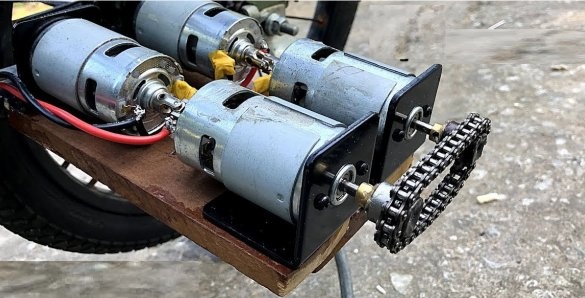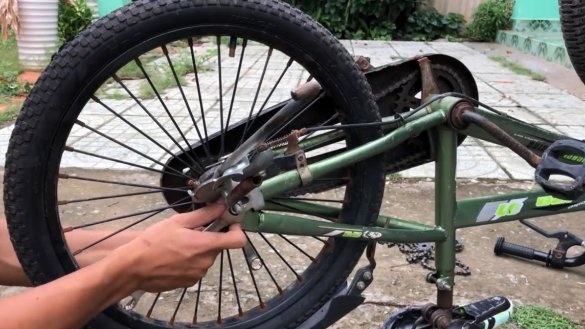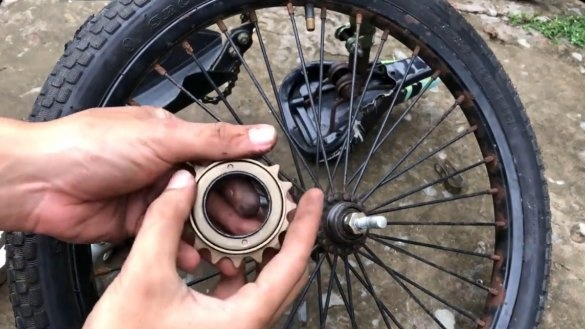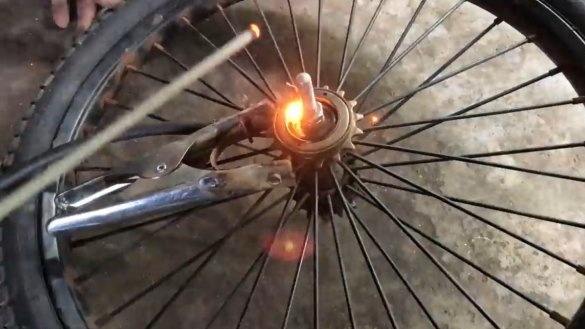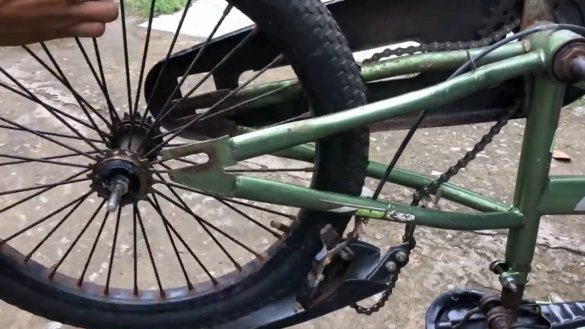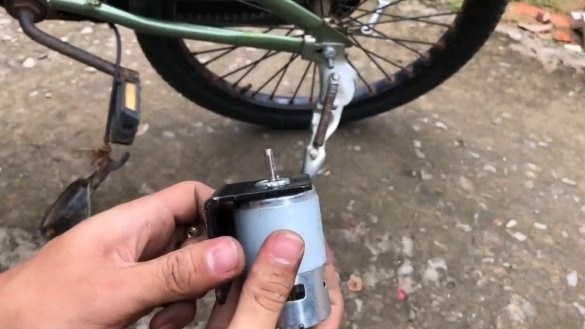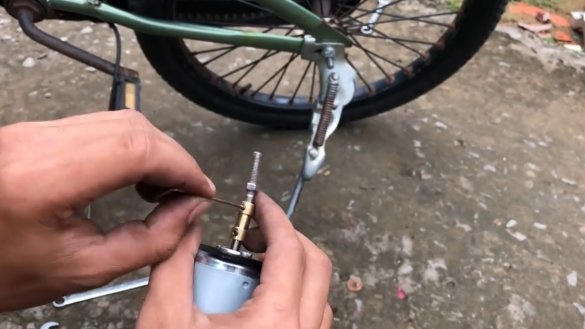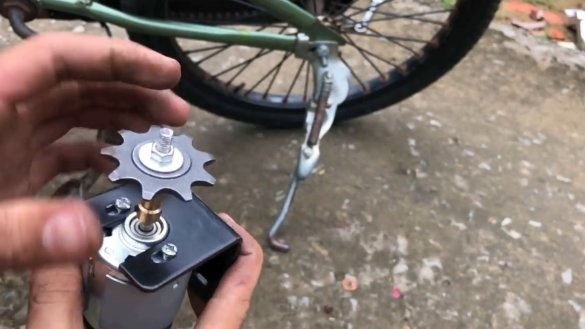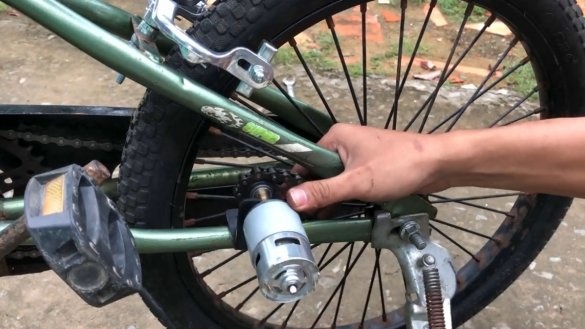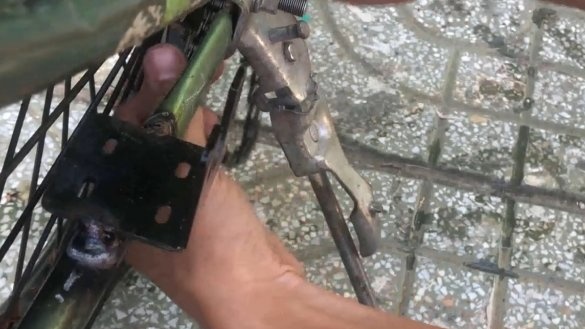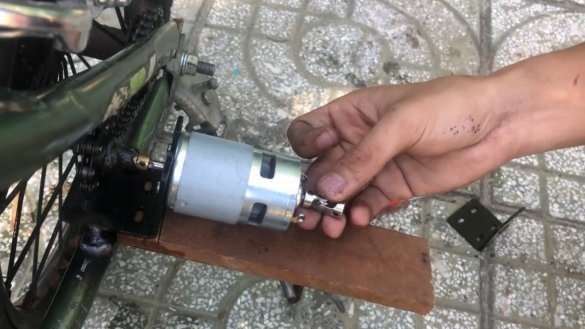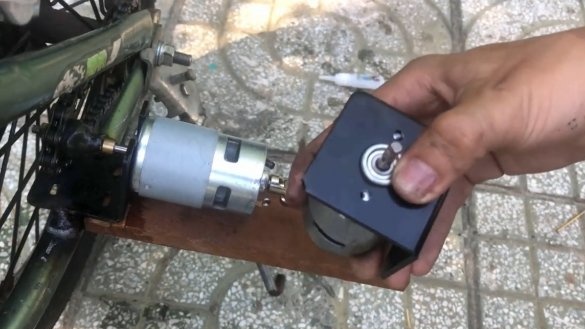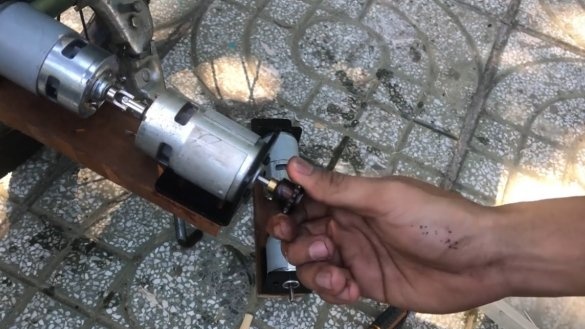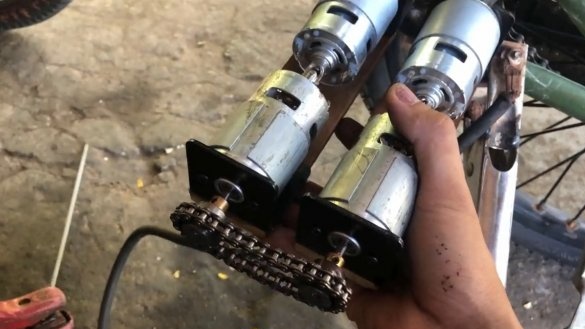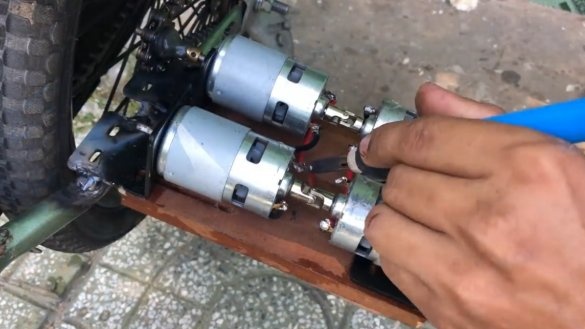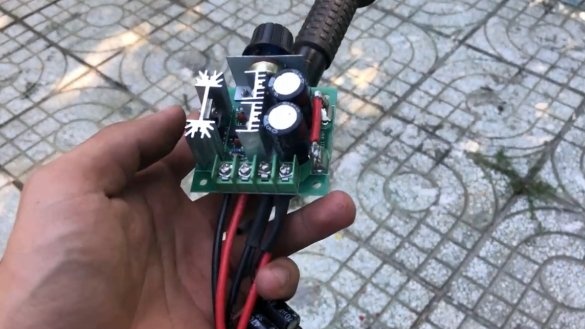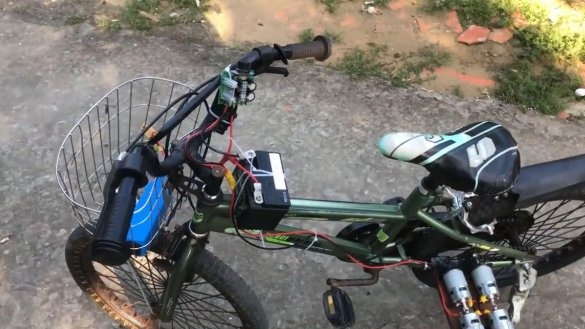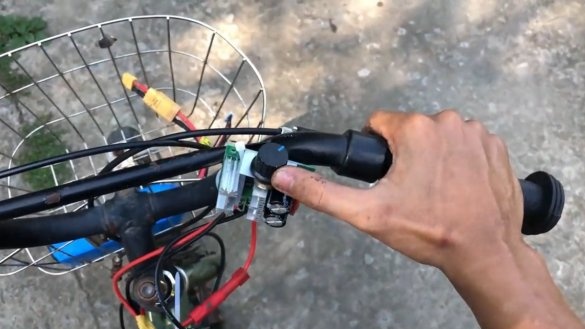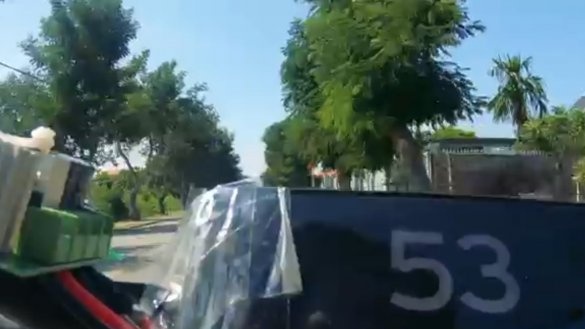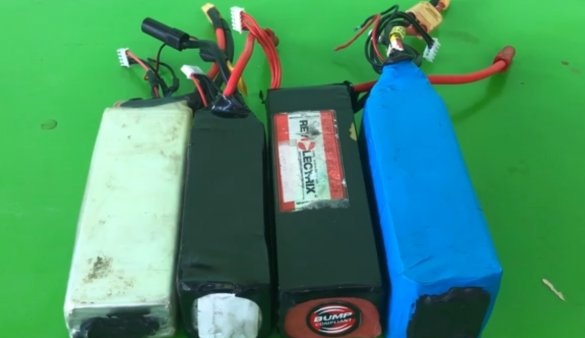I welcome all fans to craft, I propose to consider instructions for the manufacture of an experimental bike on electric motors do it yourself. The author decided to use immediately 4 motor 775, they all work synchronously, this approach allowed to disperse bike up to 55 km / h. The author controls the engine power with the help of a speed regulator, homemade quite simple, and whether it is advisable, you decide. If the project interests you, I propose to study it in more detail!
Materials and tools used by the author:
Material List:
- 4 motors 775;
- speed controller of suitable power;
- rechargeable batteries (12-24V power supply);
- two small stars and a chain;
- couplings for attaching sprockets;
- two cardan gears (for connecting shafts);
- the smallest bicycle sprocket;
- fasteners for the motor 775 (metal);
- wooden board for engine mounts;
- wires;
- plastic ties.
Tool List:
- welding machine;
- a hacksaw;
- drill.
Homemade manufacturing process:
Step one. Driven asterisk
The author puts an additional driven sprocket on the rear wheel, on which torque from the engines will go. This approach is good because it will be possible to ride a bicycle in a pedal way in case of discharging batteries.
The author welded an asterisk to the part where the rear brake is placed on the wheel. The ratchet in the star can be brewed if the star cannot be turned over. The plus of the brewed star is that the motors will be able to work as generators, moving on the coast or from a hill, thereby recharging the batteries. True, from incomprehensible currents and voltages, batteries can fail.
Step Two Installing the main motor
We put the main motor on which the drive sprocket will be located. To install the sprocket, the author put a coupling on the motor shaft, in which he fixed a piece of the threaded rod. Further, the sprocket can be screwed with nuts and washers.
To install the motor, the author welded a bracket to the frame, it should be steel, since you can not weld aluminum or plastic. If there is no steel fastener, it can be made from a piece of corner. We attach the motor to the bracket and install the chain. Now you can apply voltage to the motor and see if the circuit flies.
Step Three Other motors
The author attached a piece of the board to the welded fasteners, on that board we have the remaining three motors. Motor shafts need to be connected, the author used cardan drives.
As a result, we got two pairs of motors to connect them into a single power unit, the author put sprockets on the ends of the shafts and connected them with a chain.
Step Four Connection
We solder the wires to the contacts of the motors, they all need to be connected so that the motor shafts rotate in one direction and the torque is added up.
We use thick cables, especially the main one, which will go to the motors, such an installation will consume a lot of current.
The author placed the battery on the frame, securing it with nylon ties. Of course, the battery capacity should be very large if you plan to ride at maximum speed. The power unit is controlled through a speed regulator, which is able to withstand the necessary currents.
Step Five Test
Of course, the author did not collect everything reliably, just for the sake of experiment. Accelerating smoothly on homemade work, the author managed to achieve a speed of 55 km / h. Of course, four 775 motors is quite enough for higher speeds, but the question is how to set the battery for such an installation. Motor 775 happens at 80, 100 and even 288 watts, four medium-sized 775 motors will produce about 400 watts of power.
The project is completed on this, I hope you liked the homemade work, and you found useful thoughts for yourself. Good luck and creative inspiration, if you decide to repeat this. Do not forget to share your ideas and homemade things with us!

